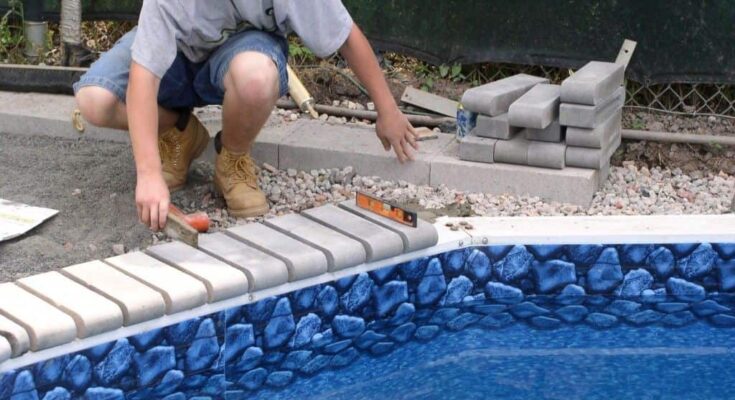Introduction of Pool Coping
Discover everything you need to know about pool coping, from types and materials to installation and maintenance, to enhance both the aesthetics and functionality of your pool.
Pool coping is an essential component of any swimming pool, serving both functional and aesthetic purposes. It provides a smooth edge for the pool and a transition from the pool to the deck. Choosing the right pool coping can significantly enhance the look of your pool area while also ensuring safety and longevity. In this comprehensive guide, we will delve into everything you need to know about pool coping, from types and materials to installation and maintenance.
Introduction to Pool Coping
Importance and Function
Pool coping serves as the finishing edge around your swimming pool, acting as a cap for the pool shell. It creates a visually appealing transition from the pool to the surrounding deck, while also providing a safe and comfortable edge for swimmers to hold onto. Additionally, pool coping plays a crucial role in protecting the pool structure, preventing water from penetrating the area behind the pool shell and causing damage.
Types of Pool Coping
Bullnose Pool Coping
Bullnose pool coping features a rounded edge, making it a popular choice for many pool owners. It offers a classic look and is comfortable to sit or lean against. This type of coping is especially suitable for pools with traditional designs.
Cantilevered Pool Coping
Cantilevered pool coping extends slightly over the edge of the pool, providing a seamless look that integrates with the surrounding deck. This type is often used with concrete decks, offering a modern and clean aesthetic.
Flat-Mount Pool Coping
Flat-mount coping is installed flush with the pool deck, providing a smooth and unobtrusive edge. It’s ideal for creating a minimalist look and is often used in contemporary pool designs.
Rough-Cut Stone Pool Coping
Rough-cut stone coping brings a natural and rustic charm to any pool area. It involves using stones with irregular shapes and textures, offering a unique and organic look that blends well with natural surroundings.
Materials Used in Pool Coping
Natural Stone
Natural stone is a premium choice for pool coping, offering a luxurious and timeless appeal. Popular options include travertine, limestone, granite, and sandstone. Each type of stone has unique characteristics, such as color variations and natural patterns, that add elegance to the pool area.
Concrete
Concrete coping is versatile and can be molded into various shapes and styles. It can also be colored and textured to mimic more expensive materials like natural stone. Concrete is durable and cost-effective, making it a popular choice for many pool owners.
Brick
Brick coping adds a classic and warm look to the pool area. It’s available in various colors and can be laid in different patterns to create a customized design. Brick is also durable and relatively easy to maintain.
Pavers
Pavers are individual pieces that can be arranged in various patterns. They come in different materials, including stone, concrete, and brick. Pavers offer flexibility in design and can be easily replaced if damaged.
Composite Materials
Composite materials are made from a combination of resin and natural fibers. They offer the look of natural stone or wood but with enhanced durability and lower maintenance requirements. Composite coping is resistant to weather, stains, and fading.
Choosing the Right Pool Coping
Factors to Consider
When selecting pool coping, consider factors such as the pool’s design, your budget, and the desired aesthetic. The coping should complement the overall look of the pool area while providing durability and safety.
Aesthetic Considerations
The appearance of the coping can significantly impact the look of your pool area. Choose a style and material that harmonizes with your pool’s design and the surrounding landscape.
Budget Constraints
Budget is a crucial factor in choosing pool coping. While natural stone may be more expensive, concrete and brick offer more affordable options without compromising on quality and appearance.
Benefits of Pool Coping
Safety
Pool coping provides a safe edge for swimmers, reducing the risk of accidents and injuries. Rounded edges and non-slip surfaces enhance safety, especially in high-traffic pool areas.
Aesthetics
Coping adds a finished look to the pool, enhancing its visual appeal. The right coping can transform the pool area into an inviting and stylish space.
Structural Integrity
Coping helps protect the pool structure by preventing water from seeping behind the pool shell. This protection is crucial in maintaining the pool’s longevity and preventing costly repairs.
Water Drainage
Properly installed coping directs water away from the pool, aiding in effective water drainage. This feature helps keep the pool deck dry and reduces the risk of water damage.
Bullnose Pool Coping
Features
Bullnose coping is characterized by its smooth, rounded edge. This design is not only aesthetically pleasing but also practical, providing a comfortable surface for swimmers to sit or lean against.
Benefits
The rounded edge of bullnose coping enhances safety by reducing sharp edges that could cause injuries. It also adds a classic and elegant look to the pool area.
Installation Process
Installing bullnose coping involves measuring and cutting the coping material to fit the pool’s perimeter. The pieces are then secured with mortar or adhesive, ensuring a tight and secure fit.
Cantilevered Pool Coping
Features
Cantilevered coping extends over the edge of the pool, creating a seamless transition from the pool to the deck. This design is often used with concrete decks for a sleek and modern look.
Benefits
Cantilevered coping offers a clean and contemporary aesthetic. It’s also practical, as it helps keep the pool deck dry by directing water away from the pool’s edge.
Installation Process
The installation of cantilevered coping involves creating a form to shape the coping and pouring concrete into the form. Once the concrete sets, it’s finished to create a smooth and seamless edge.
Flat-Mount Pool Coping
Features
Flat-mount coping sits flush with the pool deck, providing a smooth and unobtrusive edge. It’s ideal for creating a minimalist and modern look.
Benefits
Flat-mount coping enhances the pool’s aesthetic by creating a sleek and seamless edge. It’s also easy to maintain and clean, as there are no raised edges to collect debris.
Installation Process
Installing flat-mount coping involves securing the coping material directly to the pool’s edge, ensuring it’s level with the surrounding deck. This process requires precise measurements and careful alignment.
Rough-Cut Stone Pool Coping
Features
Rough-cut stone coping features irregular shapes and textures, providing a natural and rustic look. Each piece is unique, adding character and charm to the pool area.
Benefits
The natural appeal of rough-cut stone coping blends well with outdoor environments. It’s also durable and can withstand harsh weather conditions.
Installation Process
The installation of rough-cut stone coping involves selecting and fitting individual stones to create a cohesive design. The stones are then secured with mortar or adhesive to ensure stability.
Natural Stone Pool Coping
Types
Natural stone coping is available in various types, including travertine, limestone, granite, and sandstone. Each type offers unique colors, patterns, and textures.
Pros and Cons
Natural stone is highly durable and adds a luxurious appeal to the pool area. However, it can be more expensive and may require sealing to maintain its appearance.
Maintenance Tips
Regular cleaning and sealing are essential to preserve the look of natural stone coping. Avoid harsh chemicals and use pH-neutral cleaners to prevent damage

